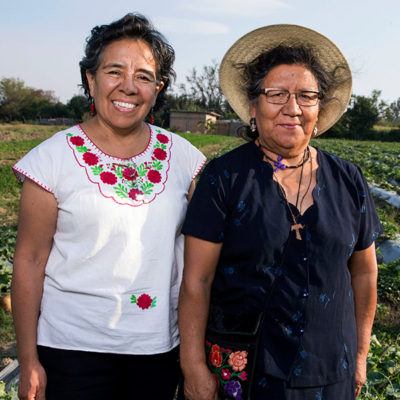
Celebrating Three Grassroots Groups Fighting for Clean Water
Posts


Activists Up Close: Meet Misael, a Water Defender in Mexico
Misael was born into a family of Indigenous farmers in Oaxaca, Mexico — his connection to the land goes back generations. Today, he works for Flor y Canto, an AJWS grantee organization that mobilizes local communities to fight for their rights to land, water and other natural resources. In 2005, the Mexican government restricted farmers’ …
Read More
Shuttering a Major Corporate Project in Mexico, ProDESC Scores a Victory for Indigenous Communities
After a five-year struggle, AJWS grantee Economic, Social and Cultural Rights Project (ProDESC) secured a major win in June when federal energy authorities in Mexico announced they had definitively cancelled a massive energy project slated to be built on the lands of an Indigenous community. The project — “Gunaa Sicarú” — was awarded to a …
Read More

Land Rights Are Women’s Rights
According to the UN, women in the developing world make up 43% of the agricultural labor force but own only 15% of the land. While I find this figure unsettling, I can’t say that I’m surprised.
Read MoreStories

Defending Land for Rural Farmers in Burma
Although the majority of Burma’s people live off the land, few Burmese laws give them any control over it. In most cases, the government owns the land, and it’s not difficult for government officials and agencies to take it back—or let a major corporation step in to develop it for their own profit. It’s particularly …
Read More
Protecting Indigenous Communities from Mining
The rapid growth of mineral mining across Mexico has ravaged local communities. Poverty and disease have soared for workers and people who live near mines and other development projects. The digging has stripped local land—ruining it for farming—and polluted sources of drinking water, multiplying health problems and miscarriages.
Read MoreDvar Tzedek
Beha’alotcha
Parashat Beha’alotcha contains one of the many episodes of grumbling during the Israelites’ journey through the desert. Lamenting their limited diet of manna, they nostalgically remember the variety of food they ate in Egypt. A close look at their complaint, and the symbolism of the foods they crave, can shed light on the contemporary issue of global hunger and the current debate over how international food aid from the United States should be delivered.
Read MoreVayikra
Parashat Vayikra catalogues the slicing, pinching, quartering, flaying, scooping, sprinkling and burning that comprised ancient Israel’s practice of korbanot—sacrifices offered in expiation, celebration or thanksgiving to God. Ritual sacrifice was a thoroughly hands-on affair, with both offeror and priest physically participating in the labor. Such gritty involvement in the process must have channeled primal drives …
Read More